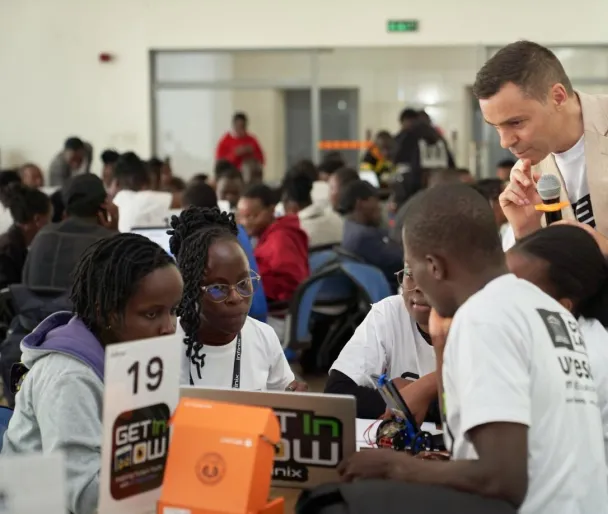The changing face of art in a digital world

Do you think the digital era — and all that comes with it, like increased accessibility, selfie tourism, social media and short attention spans — is improving or ruining the experience of art?
Robert Hughes, in his introduction to ‘The Shock of the New’, posed the following questions: “How has art created images of dissent, propaganda, and political coercion? How has it defined the world of pleasure, of sensuous communion with worldly delights? How has it tried to bring about Utopia? What has been its relation to the irrational and the unconscious? How has it dealt with the great inherited themes of Romanticism, the sense of the world as a theatre of despair or religious exaltation? And what changes were forced on art by the example and pressure of mass media, which displaced painting and sculpture from their old centrality as public speech?
Now read through those again, and replace the word art with social media, or the internet…
Often called the greatest art critic of all time, Robert Hughes passed away at age 74 in 2012, so while he was not a stranger to the world of technology, the current art world has seen some dramatic leaps in the past almost-ten years.
No wonder then, that the roundtable jumped straight to NFTs.
While the first one-off NFTs was created in 2014, the NFT market value tripled in 2020 reaching more than $250 million - and by the first quarter of 2021 NFT sales exceeded $2 billion. It’s very empowering for an artist to be able to track their work, create a business and build a career without losing out on the profits over time. With Beeple’s NFT artwork fetching USD$69M in March 2021, this technology is really grabbing the mainstream and shaking it up.
NFTs also find themselves at the centre of controversy with the reported negative effect on climate change - so we were very lucky to have new media artist, Joseph Michael, join the roundtable discussion with his unique perspective as someone who uses technology in his practice, and has found a muse in the climate crisis.
In his 2019 installation, Voices for the Future, Joseph used technology in both the creation and the presentation of the artwork. A life-sized iceberg was projected onto the exterior of the United Nations General Assembly and Secretariat buildings in New York ahead of the UN’s Climate Action Summit and global school strikes. Visitors were able to hear the creak and crack as sections of ice broke off, forcing people to acknowledge the effect that human behaviour is having on the climate.
Aside from being the tool for creation, instances like this demonstrate how technology opens the doors for access. Projecting something to tens of thousands of people live, or even millions online, is entirely and only possible because of the connected world we live in. Art is successful when it touches an audience, and widespread appreciation of an artist can increase their work’s value, therefore making art more accessible is beneficial to the artist.
It’s also beneficial to the audience, bringing new art to their consciousness. Take the example of the Van Gogh Alive installation which was recently hosted in Auckland. It was commented that while art world aficionados, museum directors or gallerists would not revere such an installation, this exhibition allowed the freedom of excitement and curiosity in relation to the art, bringing it away from a high brow gallery wall and sharing it with small children who delighted in crawling along the floor amongst the patterns of sunflowers. “How wonderful to have a moment to appreciate an artist from a time and place so far away from 2021 in New Zealand.”
Necessary evil?
Social media was named as a necessary evil for modern artists. While the pandemic saw a rise in connection on social media and online, and allowed artists to stay in touch with their audiences and know them better, the downside is feeling like a pawn… losing one’s identity in the chase of followers, heightening anxiety and changing to please the fast-paced modern audience.
Art piracy and illegal downloading are also concerns for artists, especially those in the musical space. The table benefitted from the perspective of a musician, who spoke about the vinyl and CDs of yesteryear, and what a far cry we are from that way of experiencing music now when you can just ask Alexa to play something.
The freedom to create, versus the requirement for funding is a tale as old as time, and isn’t too different from the charitable funding argument. How can artists independently thrive and create when they’re cut off from royalties by streaming services or algorithms?
This is where technology could be a great enabler for artists. Take inspiration from examples like Christo and Jeanne Claude who recoup the millions of dollars spent on their projects by selling project documentation. Or platforms like Patreon which connect artists and creators to fans, developing an income stream which allows for creation.
In these ways, technology enables the public to contribute to the work and be part of it’s story and creation, building an infrastructure around artists to ensure they’re fairly compensated, that they’re not exploited and that they can keep their artist vision pure.
Does this bring us all the way back to the blockchain and carbon emissions?
Well here’s some hopeful innovation... Pop on Lorde’s new album Solar Power, and let your mind be taken away to a dreamy, summer coast knowing that if she managed to create this certified carbon-neutral album, then we can trust that the purity and creative vision of artists will have as much of an impact on the future as any technological development.
This article first appeared in ‘Connecting for a Better Future: a collection of essays’ in response to the RUSH x AUT Techweek Roundtable Discussions published in September 2021. Read the full whitepaper here.








